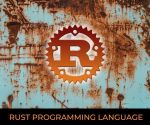“Julia is a high-level, high-performance dynamic programming language designed for numerical computing, data science, and scientific computing.”
The Julia Language Website
Julia is a high-level, high-performance programming language designed for numerical and scientific computing, data analysis, and machine learning. It was first released in 2012 and has gained popularity in recent years due to its ease of use, speed, and versatility.
Some key facts:
- Julia is a dynamically typed language with a syntax that is similar to that of MATLAB, Python, and R.
- Julia is known for its speed and efficiency, with benchmarks showing that Julia can be up to 100 times faster than Python and R for certain tasks.
- According to the TIOBE Index (as of March 2023), Julia ranks at #39 in popularity among programming languages.
- Julia has been used in a variety of fields, including astronomy, finance, engineering, and data science.
- Julia is designed to be interoperable with other programming languages, allowing users to easily integrate Julia code with code written in other languages.
Features Of Julia
Some key features of Julia include:
- High-performance: Julia was designed to be fast, and it achieves this through a combination of features such as just-in-time (JIT) compilation, type inference, and multiple dispatch. This makes it comparable in speed to compiled languages like C and Fortran, while still being easy to use like interpreted languages like Python.
- Dynamic and expressive: Julia has a dynamic type system and supports multiple dispatch, which means that functions can be defined for multiple argument types and Julia will choose the appropriate one based on the types of the arguments at runtime. This makes Julia code more expressive and flexible than other languages, allowing for easy development of complex algorithms and data structures.
- Interoperability: Julia can call C and Fortran functions directly, and has built-in support for calling Python and R code as well. This makes it easy to integrate Julia code with existing scientific computing libraries and tools.
- Parallel computing: Julia has built-in support for parallel and distributed computing, making it easy to scale computations across multiple CPUs or even multiple machines.
- Open-source: Julia is open-source and freely available, with an active and growing community of developers and users contributing to its development.
Challenges of Julia Programming Language
As with any programming language, Julia has its own set of challenges. Here are some of the most common challenges associated with using Julia:
- Learning Curve: Julia has a steep learning curve for those who are new to programming or are not familiar with scientific computing. The syntax and concepts used in Julia are different from other programming languages, which can make it challenging to get started.
- CommunitySupport: Julia is a relatively new language compared to some of the more established languages like Python and R. As a result, the community is smaller, and there are fewer resources and libraries available.
- Compatibility: Julia is designed to be compatible with other programming languages, but it may not always work seamlessly. Compatibility issues can arise when integrating with other languages, which can lead to additional work to ensure compatibility.
- Debugging: Debugging Julia code can be a challenge, especially for those who are not familiar with the language. Due to Julia’s dynamic nature, it can be difficult to catch errors during the development process.
- PerformanceTuning: While Julia is known for its speed and performance, it can still be challenging to optimize code to run efficiently. This requires a deep understanding of the language and its capabilities.
- Documentation: While Julia has extensive documentation, it can be challenging to navigate, especially for those new to the language. The documentation is also constantly evolving, which can make it difficult to keep up with changes.
While Julia has its challenges, it is a powerful and fast language that is well-suited for scientific computing and data analysis. As the community grows and the language continues to evolve, many of these challenges may be addressed, making Julia an even more attractive option for programmers.
Use Cases Of Julia Programming Language
Julia is a versatile programming language that can be used in a variety of applications. Here are some common use cases for Julia:
- Scientific Computing: Julia was originally designed for scientific computing, and it is well-suited for tasks such as numerical simulations, solving differential equations, and optimization problems.
- Data Science: Julia has become increasingly popular in the field of data science due to its speed and performance. It is often used for tasks such as data cleaning, transformation, and analysis.
- Machine Learning: Julia has several machine learning libraries, such as Flux.jl and MLJ.jl, that make it easy to build and train machine learning models.
- High-Performance Computing: Julia’s speed and ability to handle parallelism make it well-suited for high-performance computing applications. It is often used in areas such as finance, where fast computation times are essential.
- Web Development: While not as commonly used in web development as other languages like Python and JavaScript, Julia has several web frameworks such as Genie.jl that make it possible to build web applications.
Julia’s speed and performance make it well-suited for applications that require high-speed computations, such as scientific computing, data science, and machine learning. It is also a good choice for applications that require parallel processing or high-performance computing
Final Thoughts
Julia is a high-performance programming language designed for numerical and scientific computing. It is a relatively new language with a growing community and is well-suited for tasks that require high-speed computations, such as data analysis and machine learning. While there are some challenges associated with using Julia, it offers many advantages, including easy parallelism, fast execution times, and compatibility with other languages.
Overall, Julia is an exciting option for programmers looking to work in data science and scientific computing.
🅐🅚🅖
Interested in Management, Design or Technology Consulting, contact anil.kg.26@gmail.com
Get updates and news on our social channels!
LATEST POSTS
- A Tale Of Two Frameworks: Spring Boot vs. Django
 “Spring Boot’s convention over configuration approach simplifies development, allowing developers… Read more: A Tale Of Two Frameworks: Spring Boot vs. Django
“Spring Boot’s convention over configuration approach simplifies development, allowing developers… Read more: A Tale Of Two Frameworks: Spring Boot vs. Django - Unleashing The Power Of Django
 “Django, akin to a Swiss Army knife, provides a comprehensive… Read more: Unleashing The Power Of Django
“Django, akin to a Swiss Army knife, provides a comprehensive… Read more: Unleashing The Power Of Django - Potential of Progressive Web Apps (PWAs)
 “PWAs are not just about technology; they are about creating… Read more: Potential of Progressive Web Apps (PWAs)
“PWAs are not just about technology; they are about creating… Read more: Potential of Progressive Web Apps (PWAs) - Unleashing The Power Of Spring Framework
 “Spring Framework simplifies enterprise Java development, but it does so… Read more: Unleashing The Power Of Spring Framework
“Spring Framework simplifies enterprise Java development, but it does so… Read more: Unleashing The Power Of Spring Framework - Key Trends Of OSINT In 2024
 “The future of OSINT lies in our ability to adapt… Read more: Key Trends Of OSINT In 2024
“The future of OSINT lies in our ability to adapt… Read more: Key Trends Of OSINT In 2024 - Can Google’s Carbon Language Replace C++?
 “While Carbon may excel in performance-critical domains, it cannot replace… Read more: Can Google’s Carbon Language Replace C++?
“While Carbon may excel in performance-critical domains, it cannot replace… Read more: Can Google’s Carbon Language Replace C++? - Integration of Design Thinking, Lean, and Agile
 “Innovation thrives when Design Thinking, Lean, and Agile converge, creating… Read more: Integration of Design Thinking, Lean, and Agile
“Innovation thrives when Design Thinking, Lean, and Agile converge, creating… Read more: Integration of Design Thinking, Lean, and Agile - Benefits Of Infrastructure as Code (IaC)
 “Infrastructure as Code is the single most important thing you… Read more: Benefits Of Infrastructure as Code (IaC)
“Infrastructure as Code is the single most important thing you… Read more: Benefits Of Infrastructure as Code (IaC) - Power Of Internet of Everything (IoE)
 “The true power of the Intebrnet of Everything lies not… Read more: Power Of Internet of Everything (IoE)
“The true power of the Intebrnet of Everything lies not… Read more: Power Of Internet of Everything (IoE) - How Is The Enterprise IoT Evolving?
 “IoT is not just about connecting things; it’s about connecting… Read more: How Is The Enterprise IoT Evolving?
“IoT is not just about connecting things; it’s about connecting… Read more: How Is The Enterprise IoT Evolving? - IT Pricing Strategy And Models
 “The art of pricing lies in finding the perfect balance… Read more: IT Pricing Strategy And Models
“The art of pricing lies in finding the perfect balance… Read more: IT Pricing Strategy And Models - What Is SYCL (“sickle”)?
 “SYCL provides a powerful and intuitive programming model that simplifies… Read more: What Is SYCL (“sickle”)?
“SYCL provides a powerful and intuitive programming model that simplifies… Read more: What Is SYCL (“sickle”)? - What Is A Data Lakehouse?
 “With a data lakehouse, organizations can break down data silos,… Read more: What Is A Data Lakehouse?
“With a data lakehouse, organizations can break down data silos,… Read more: What Is A Data Lakehouse? - 5G – The Future Of The Internet
 “5G is the next big step in the evolution of… Read more: 5G – The Future Of The Internet
“5G is the next big step in the evolution of… Read more: 5G – The Future Of The Internet - Ransomware Groups Are Switching To Rust
 “Rust is to Ransomware what a lockpick is to a… Read more: Ransomware Groups Are Switching To Rust
“Rust is to Ransomware what a lockpick is to a… Read more: Ransomware Groups Are Switching To Rust - Streaming Data Pipelines
 “A streaming data pipeline is like a river: it flows… Read more: Streaming Data Pipelines
“A streaming data pipeline is like a river: it flows… Read more: Streaming Data Pipelines - Why Rust Is Best?
 “Rust is a systems programming language that runs blazingly fast,… Read more: Why Rust Is Best?
“Rust is a systems programming language that runs blazingly fast,… Read more: Why Rust Is Best? - Database Sharding Explained
 “Database sharding is like breaking a large puzzle into smaller,… Read more: Database Sharding Explained
“Database sharding is like breaking a large puzzle into smaller,… Read more: Database Sharding Explained - Ambient Computing Will Be The Future Tech
 “Ambient computing creates a seamless technology-rich environment, but challenges in… Read more: Ambient Computing Will Be The Future Tech
“Ambient computing creates a seamless technology-rich environment, but challenges in… Read more: Ambient Computing Will Be The Future Tech - Key Trends Of OSINT In 2023
 “OSINT is not just a technique, it’s a mindset. It’s… Read more: Key Trends Of OSINT In 2023
“OSINT is not just a technique, it’s a mindset. It’s… Read more: Key Trends Of OSINT In 2023

